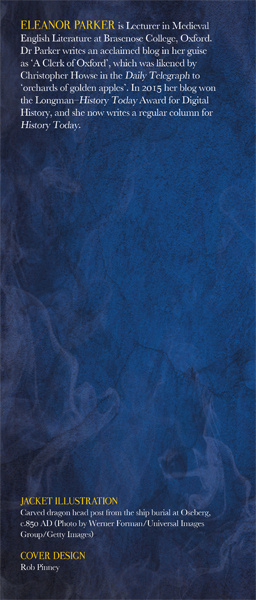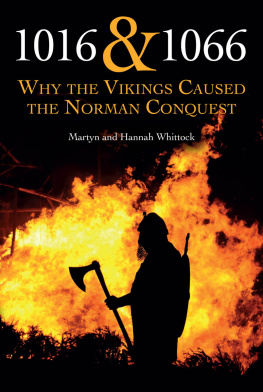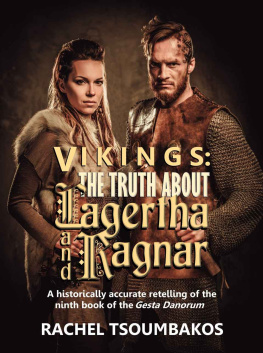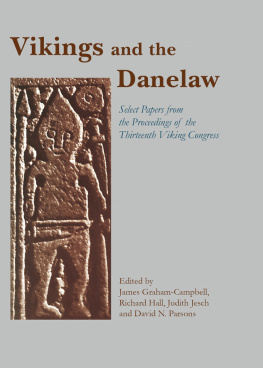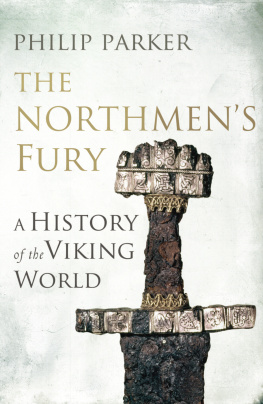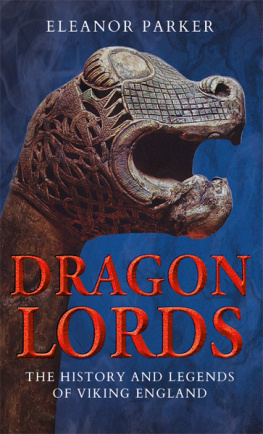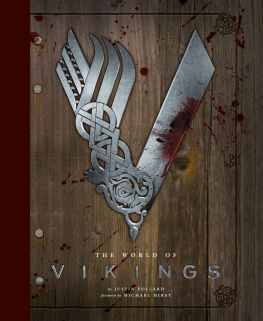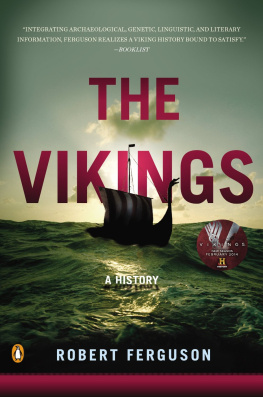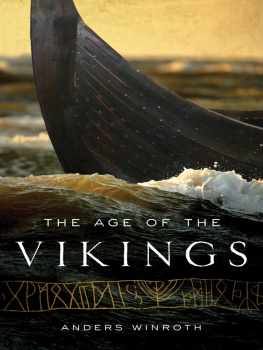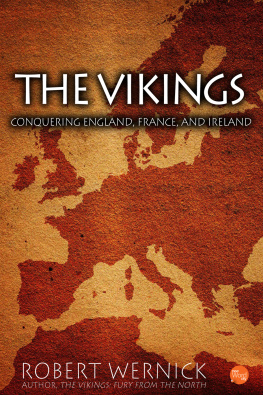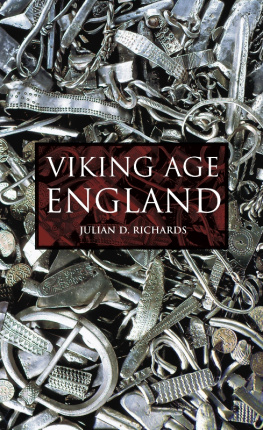
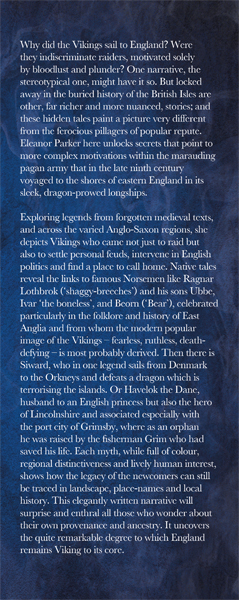
Eleanor Parker is Lecturer in Medieval English Literature at Brasenose College, Oxford. Dr Parker writes an acclaimed blog in her guise as A Clerk of Oxford, which was likened by Christopher Howse in the Daily Telegraph to orchards of golden apples. In 2015 her blog won the LongmanHistory Today Award for Digital History, and she now writes a regular column for History Today.
Dragon Lords offers an absorbing and authoritative account of the survival of Scandinavian legends and history in post-Conquest England. Fromdragon-shipstobears sons, andsinners to saints, Eleanor Parkers nuanced readings of English, French, Old Norse and Latin sources unpack a wealth of unfamiliar and exciting stories. This beautifully written book succeeds in casting Viking invaders and settlers in an unexpected new light.
Carolyne Larrington, Professor of Medieval European Literature, University of Oxford, author of The Land of the Green Man: A Journey Through the Supernatural Landscapes of the British Isles (I.B.Tauris, 2015)
Dragon Lords tells the fascinating and hitherto unknown story of how the Viking invasions of England were turned into myth and legend by those whom the Scandinavians raided and later ruled. Eleanor Parker vividly retells and contextualises this material (with its dragons, raven banners and unturning tides) while demonstrating at the same time a truly impressive command of Anglo-Scandinavian history and literature.
Heather ODonoghue, Professor of Old Norse, University of
Oxford, author of From Asgard to Valhalla:
The Remarkable History of the Norse Myths (I.B.Tauris, 2007)
In this welcome new book, Eleanor Parker sketches the fascinating and varied ways in which the people of medieval England reflected upon their Viking past both real and imagined. Part literary study, part historical investigation and part folkloric inquiry, it makes a riveting and rewarding read.
Levi Roach, Lecturer in Medieval History,
University of Exeter, author of thelred: The Unready

Published in 2018 by
I.B.Tauris & Co. Ltd
London New York
www.ibtauris.com
Copyright 2018 Eleanor Parker
The right of Eleanor Parker to be identified as the author of this work has been asserted by the author in accordance with the Copyright, Designs and Patents Act 1988.
All rights reserved. Except for brief quotations in a review, this book, or any part thereof, may not be reproduced, stored in or introduced into a retrieval system, or transmitted, in any form or by any means, electronic, mechanical, photocopying, recording or otherwise, without the prior written permission of the publisher.
Every attempt has been made to gain permission for the use of the images in this book. Any omissions will be rectified in future editions.
References to websites were correct at the time of writing.
ISBN: 978 1 78453 786 9
eISBN: 978 1 78672 360 4
ePDF: 978 1 78673 360 3
A full CIP record for this book is available from the British Library
A full CIP record is available from the Library of Congress
Library of Congress Catalog Card Number: available
Typeset by Riverside Publishing Solutions, Salisbury, UK Printed and bound in Sweden by ScandBook AB
list of illustrations
Images are the authors own, unless stated otherwise.
Images of St Edmund, medieval and modern:
The story of Lothbrok and Edmund, illustrated in a fifteenth-century manuscript of John Lydgates Life of St Edmund (British Library, Harley MS. 2278):
timeline of key texts and events
| 793 | Viking attack on Lindisfarne |
| 8667 | A Viking army captures York; Osberht and lla, kings of Northumbria, are both killed |
| 869 | Edmund, king of East Anglia, is killed by a Viking army |
| 937 | thelstan, king of Wessex, defeats an alliance of Norse and Scottish armies at the Battle of Brunanburh |
| 941 | Oda, son of a Danish settler, becomes Archbishop of Canterbury |
| c.9857 | Abbo of Fleury, Passio Sancti Eadmundi |
| 1013 | Svein Forkbeard, king of Denmark, invades England, but dies the following year |
| 1016 | Cnut becomes king of England |
| c.10402 | Encomium Emmae Reginae |
| 1055 | Death of Siward, earl of Northumbria, Huntingdon and Northampton |
| 1066 | Harold Godwineson becomes king of England and is killed in battle at Hastings. Beginning of Norman rule over England |
| 1076 | Execution of Waltheof |
| 1080s | Osbern of Canterbury, Vita and Translatio of St lfheah |
| 1090s | Completion of Hermans Miracula Sancti Eadmundi |
| 110731 | Gesta Herwardi composed between these dates |
| 1130s | Henry of Huntingdon, Historia Anglorum |
| c.11367 | Geffrei Gaimar, Estoire des Engleis |
| 114856 | Geoffrey of Wells, De Infantia S. Eadmundi |
| c.1188c.1208 | Saxo Grammaticus Gesta Danorum composed between these dates |
| c.120020 | The Anglo-Norman Lai dHaveloc, Gui de Warewic, and Roman de Waldef all probably composed in these years |
| c.1219 | Gesta antecessorum comitis Waldevi |
| c.1230s | Roger of Wendover, Flores Historiarum |
| c.1250 | Oldest surviving version of Ragnars saga composed around this time |
| c.1290 | Middle English Havelok |
| c.1300 | First of several Middle English versions of Gui de Warewic composed |
| c.1433 | John Lydgate, Life of St Edmund |
acknowledgements
At the beginning of a book full of origin-myths and ancestry legends, it is a pleasure to thank those who have helped to make this book what it is. The research on which it is based was carried out at the University of Oxford, made possible by support from the Arts and Humanities Research Council and the Mellon Foundation. At every stage it has benefited immeasurably from the wisdom and generosity of Heather ODonoghue; I owe the first idea for this project to her, among countless other things. Special thanks are due to Carolyne Larrington, Matthew Townend, Levi Roach, Laura Ashe, Alex Wright, and my colleagues, students and friends at Brasenose College, Oxford. This book is dedicated to my family, because I could not have written it without them. From Winchester to Wallingford, Crowland to Cuckhamsley, they have been with me every step of the way.
a note on names
The Old Norse names of the people discussed in this book appear in various forms in the medieval texts, so to avoid confusion I have adopted standard anglicisations as far as possible: Cnut, Ivar, Olaf, in place of Kntr, varr, lfr, and so on, except in some quotations. Medieval English writers were very far from being consistent in their treatment of Norse names; I have attempted to be so, but some inconsistencies will doubtless remain. Readers unfamiliar with Anglo-Saxon and Norse names may find it helpful to know that the letters and both represent th.
Next page
